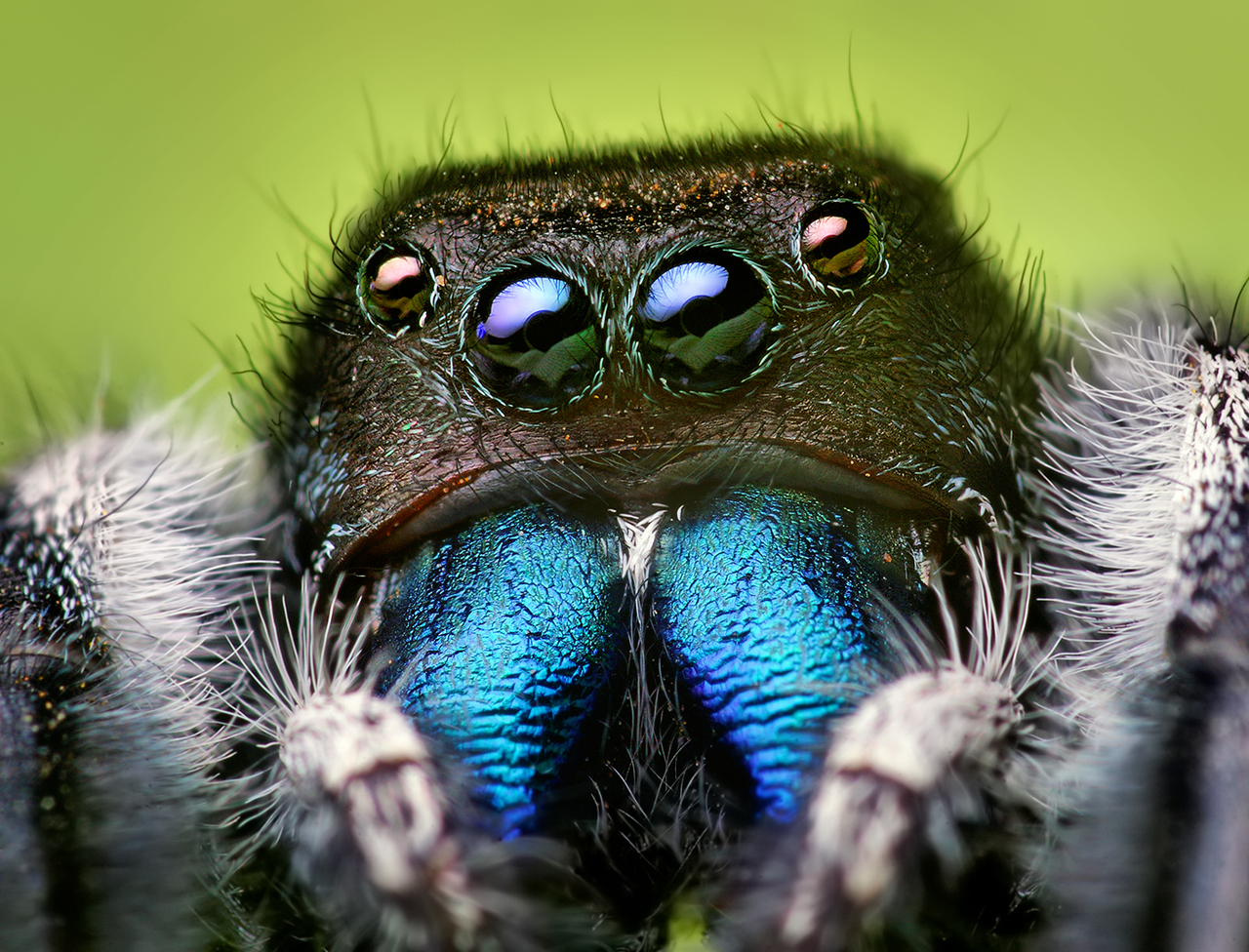Eight-legged cats!
Like a cat the salticids will locate, track, stalk down, and
leap onto active prey. All of these actions are under optical
control. Due to this optical control they can distinguish
between mates and rivals, as well as living and non-living
organisms. Most spiders have poor vision but salticids have
acute vision. No other spider has such intricate eyes and such
complex vision-guided behavior. Salticids vision is unusual, and
highly evolved. Many neurobiologists have extensively studied
this stand-out trait of the salticidae family. Salticids have 4
sets of eyes. The antero-median (AM) eyes are responsible for
their acute vision. These eyes are quite large and give the
spider an almost cat-like resemblance. The other three sets of
eyes are located on the side of the AM eyes, and the back and
top of their head. These additional three sets detect movement.
Here is a diagram of their eye layout (Harland 2000).
Interestingly, when attacking its prey the spider may take a
detour if a direct route is not available. This detouring
ability has been extensively studied because the fact that they
can perform these detours shows that they have the ability to
problem solve. These studies have been done by placing a spider
in artificial vegetation and observing its hunting tactics. When
the spider chose between two routes, of which only one led to
prey, the spider always chose the right one. The spider chose
correctly even if it meant loosing sight of the prey momentarily
and/or moving away from the prey. This has been compared to
similar detours in lions’ hunting tactics that although have not
been studied experimentally are demonstrations of planning
ahead. However, not many question how this is possible in lions
because they have much bigger brains and are also mammals that
have evolved tremendously.

Studies have shown that salticids can distinguish between
insects and spiders, even if the spider is outside of its web.
Also, they can rely on their eyesight to differentiate between
egg-carrying spiders and eggless spiders. In order to do this,
the spider must have extremely good spatial acuity.
Sympetrum striolatus, a dragonfly, has the highest acuity,
0.4°, of any insect. The salticids much smaller eyes have an
acuity of 0.04°, this is ten times better than that of the
dragonfly! To give an idea of just how much smaller the
salticid's eyes are compared to the dragonfly, the compound eyes
of the dragonfly are comparable in size to the spiders entire
combined, abdomen and head! The humans acuity of 0.007° is only
five times better than that of the spiders. Acuity of 0.04°
would mean that at a distance of 200 mm, the spider can
distinguish between two objects that are no more than 0.12 mm
apart (Harland 2000).
How in the world is this possible? Well, to put it simply the
layout of the AM eyes, which are responsible for the acute
vision of the spider, are an almost exact resemblance to that of
binoculars. The AM eyes of salticids have a long eye tube that
has a small four-layered stack of retina at the end of it. The
unique stacked layers of retina function in the ability to
perceive color. The differing wavelengths of light, the
different colors, come into focus at different layers on the
retina. Allowing the spider to distinguish what the color is of
the object it is looking at. The salticids actually have the
ability to move their eye-tubes side to side. This allows the
image to be focused and gives the spider the ability to sustain
its complex vision-guided behavior (Harland 2000).
An example of such vision-guided behavior would be its ability
to accurately leap to attack its prey.
